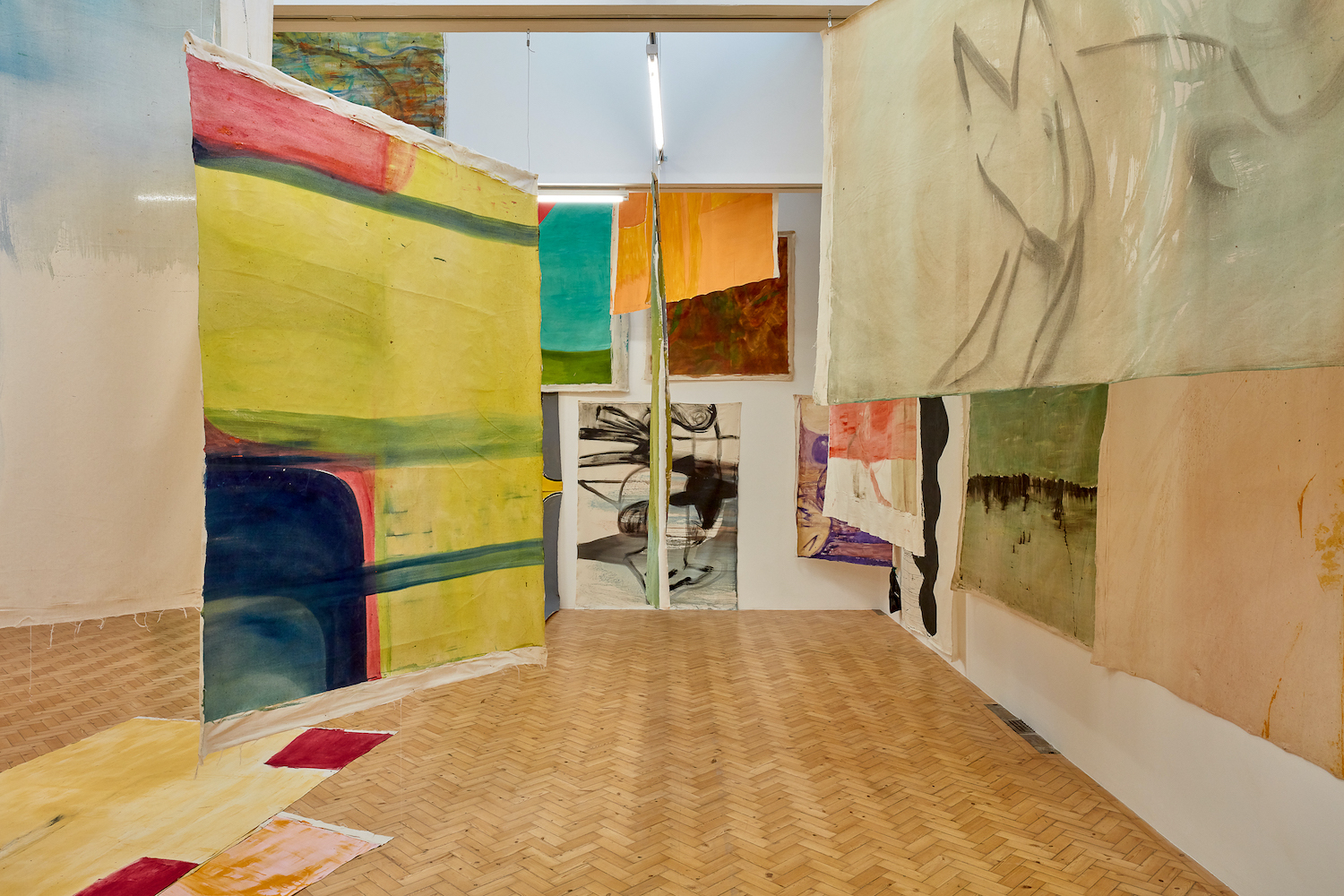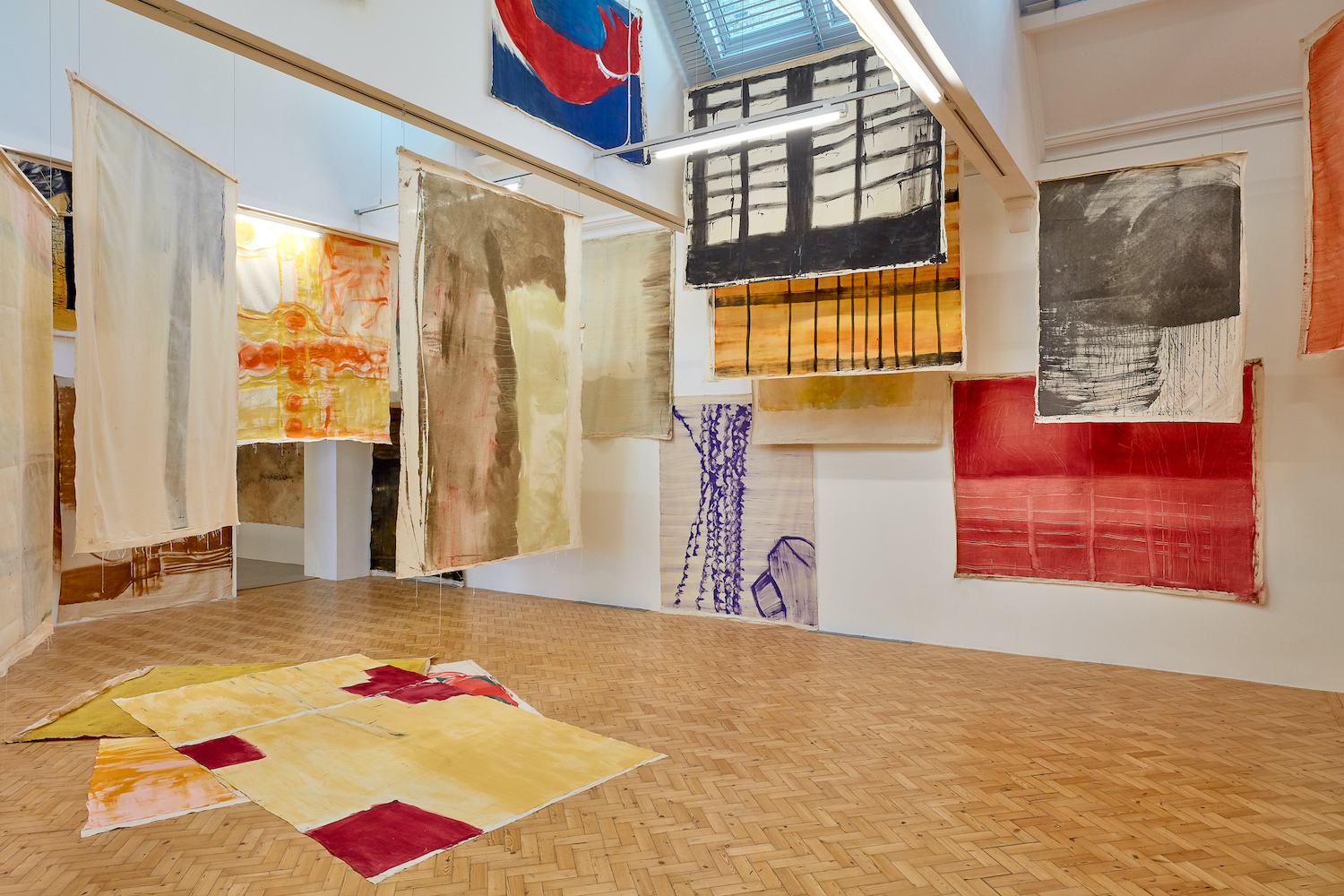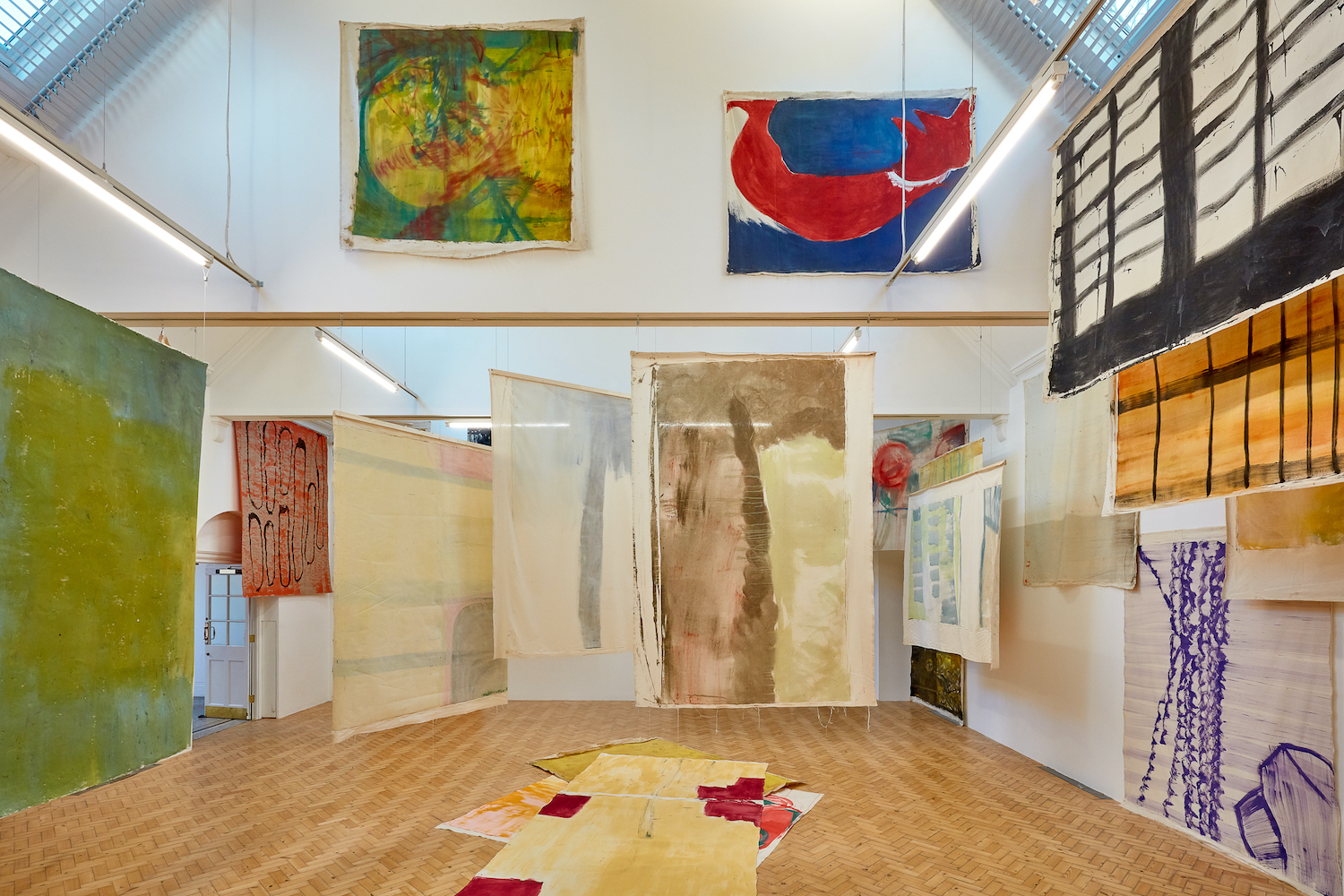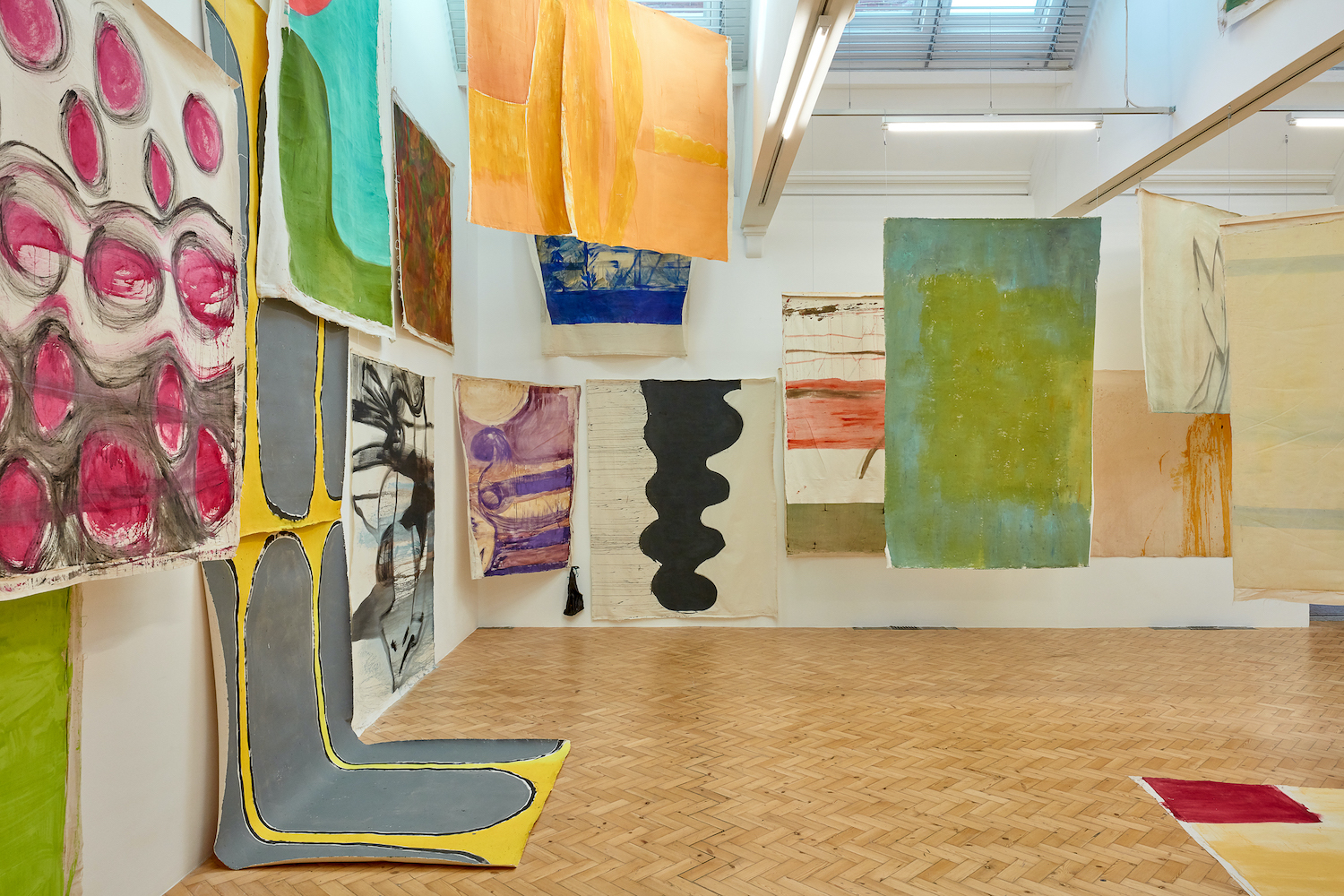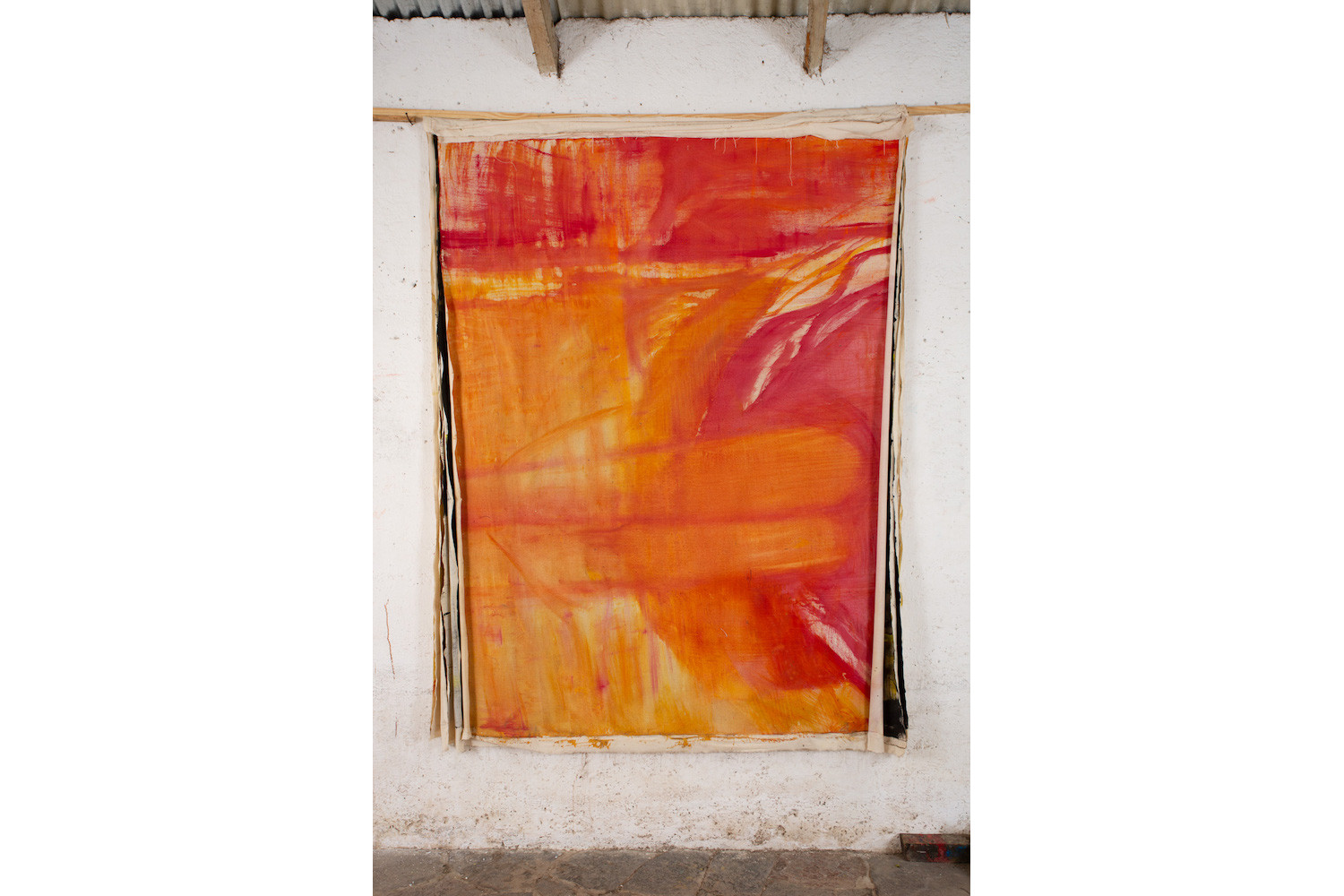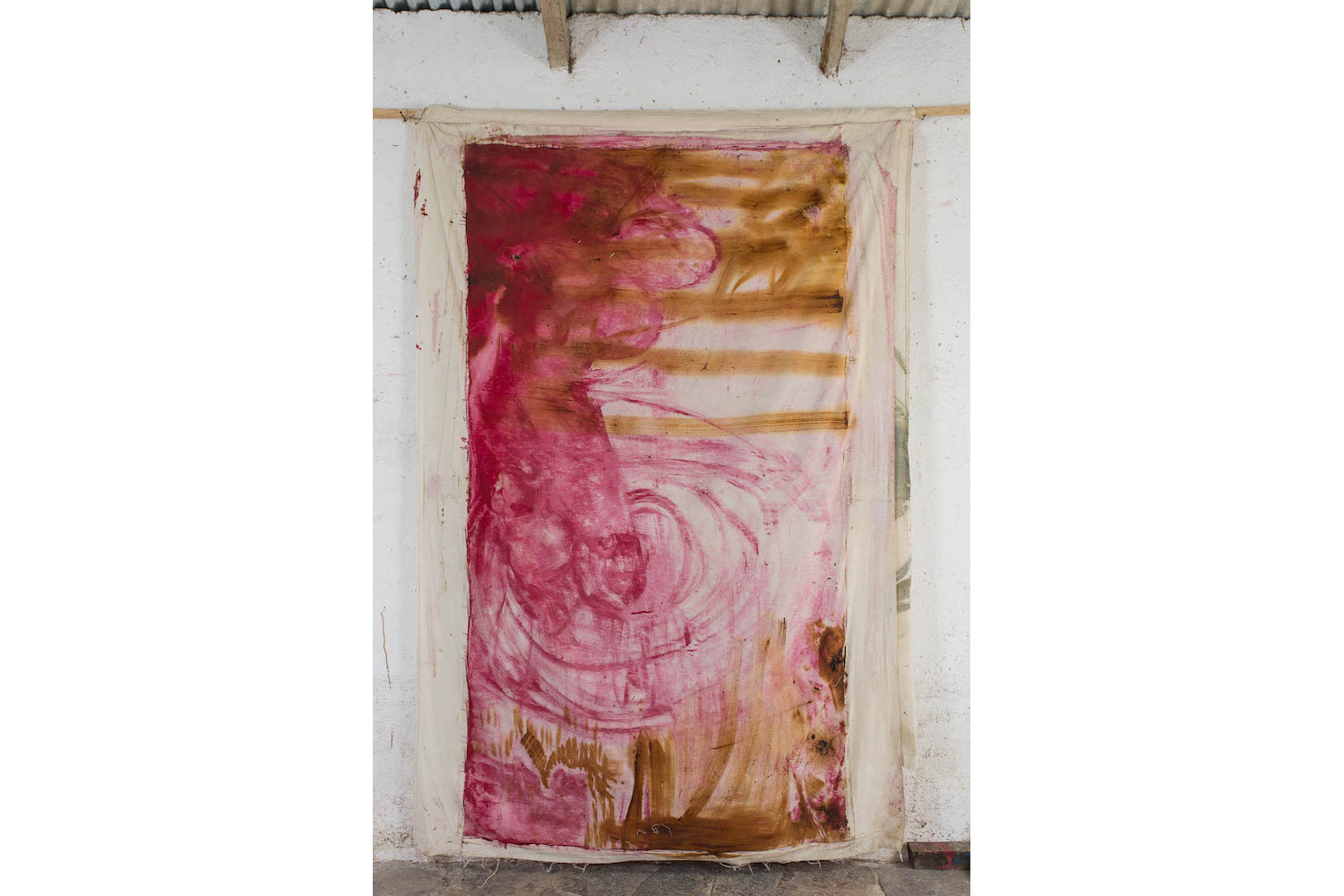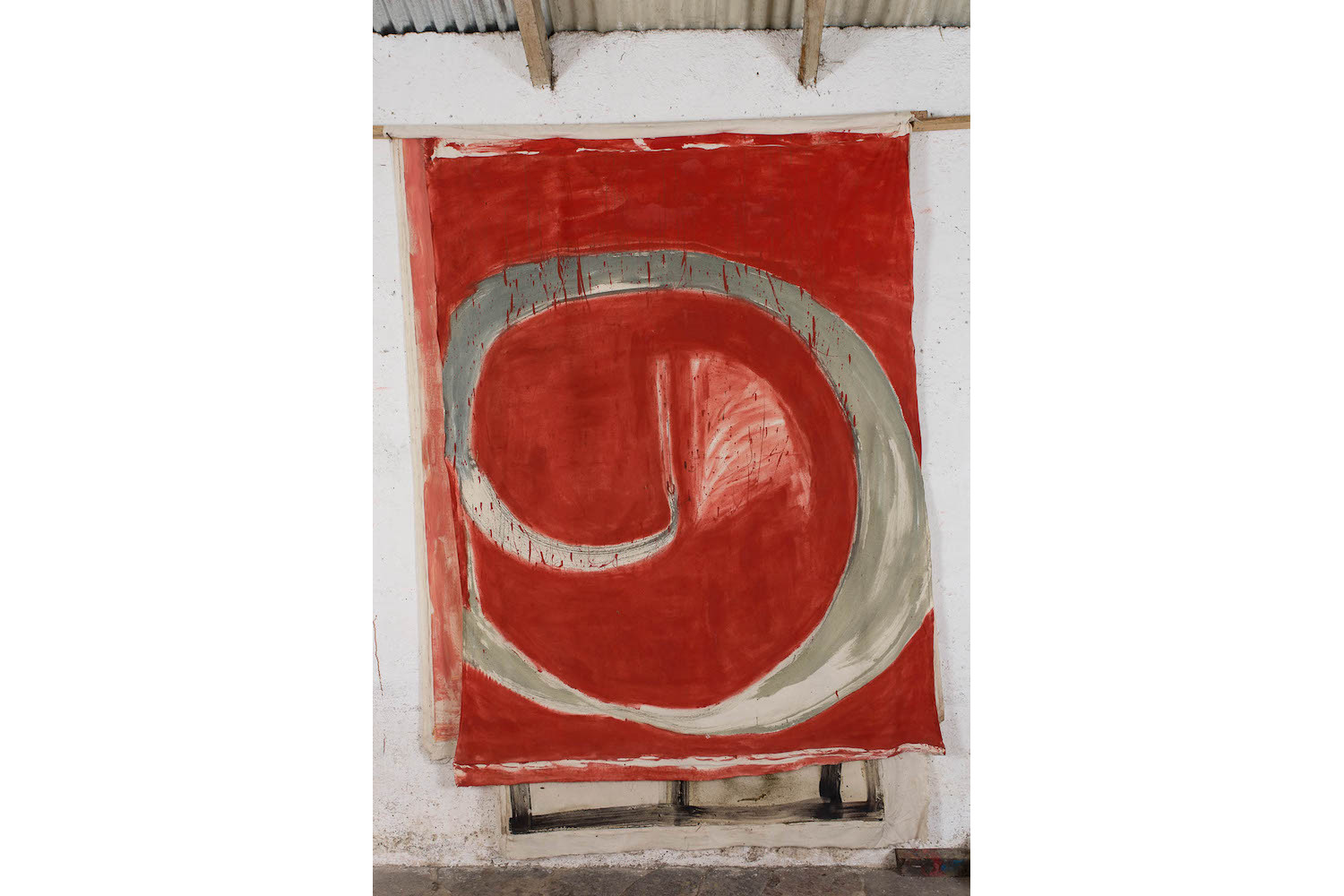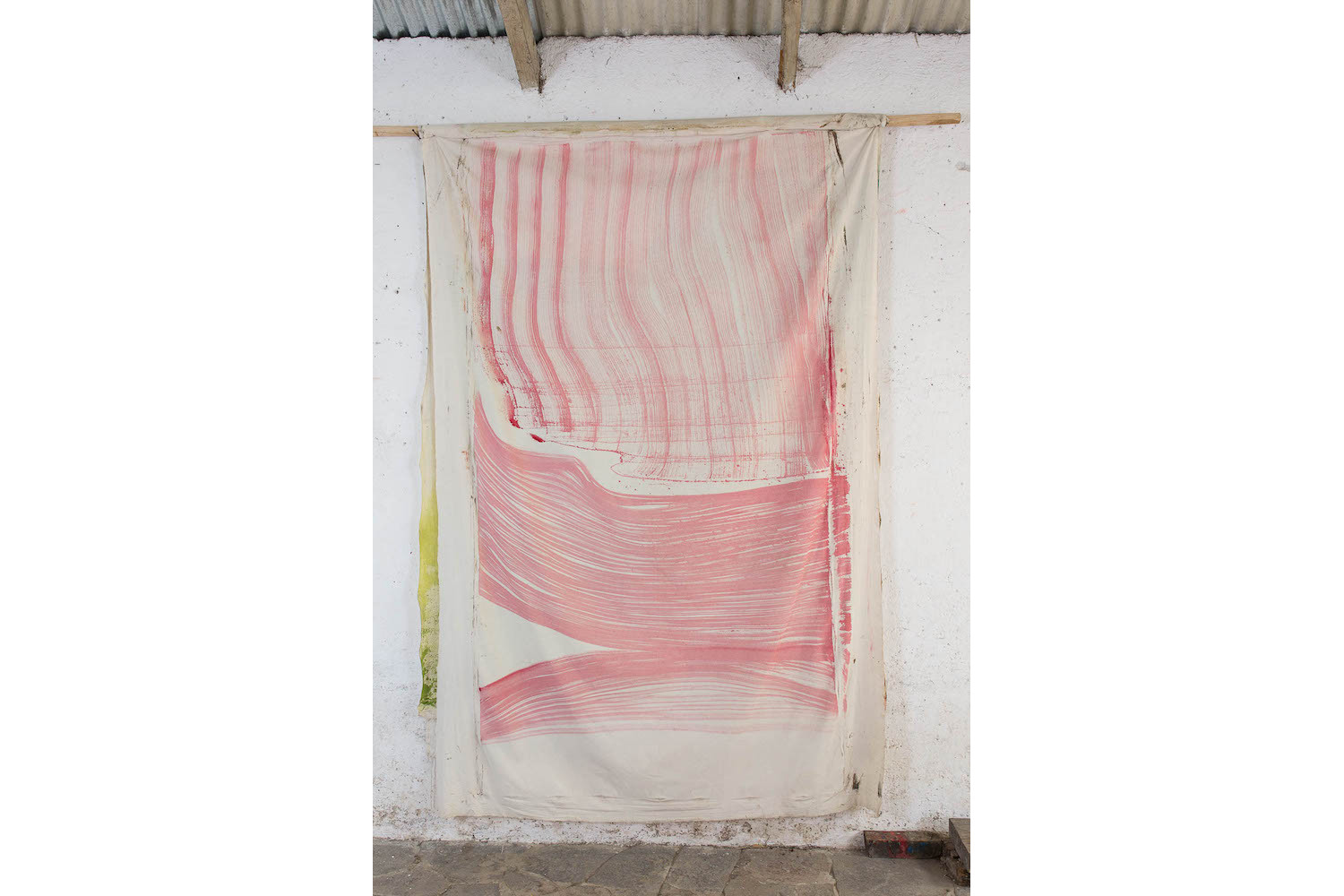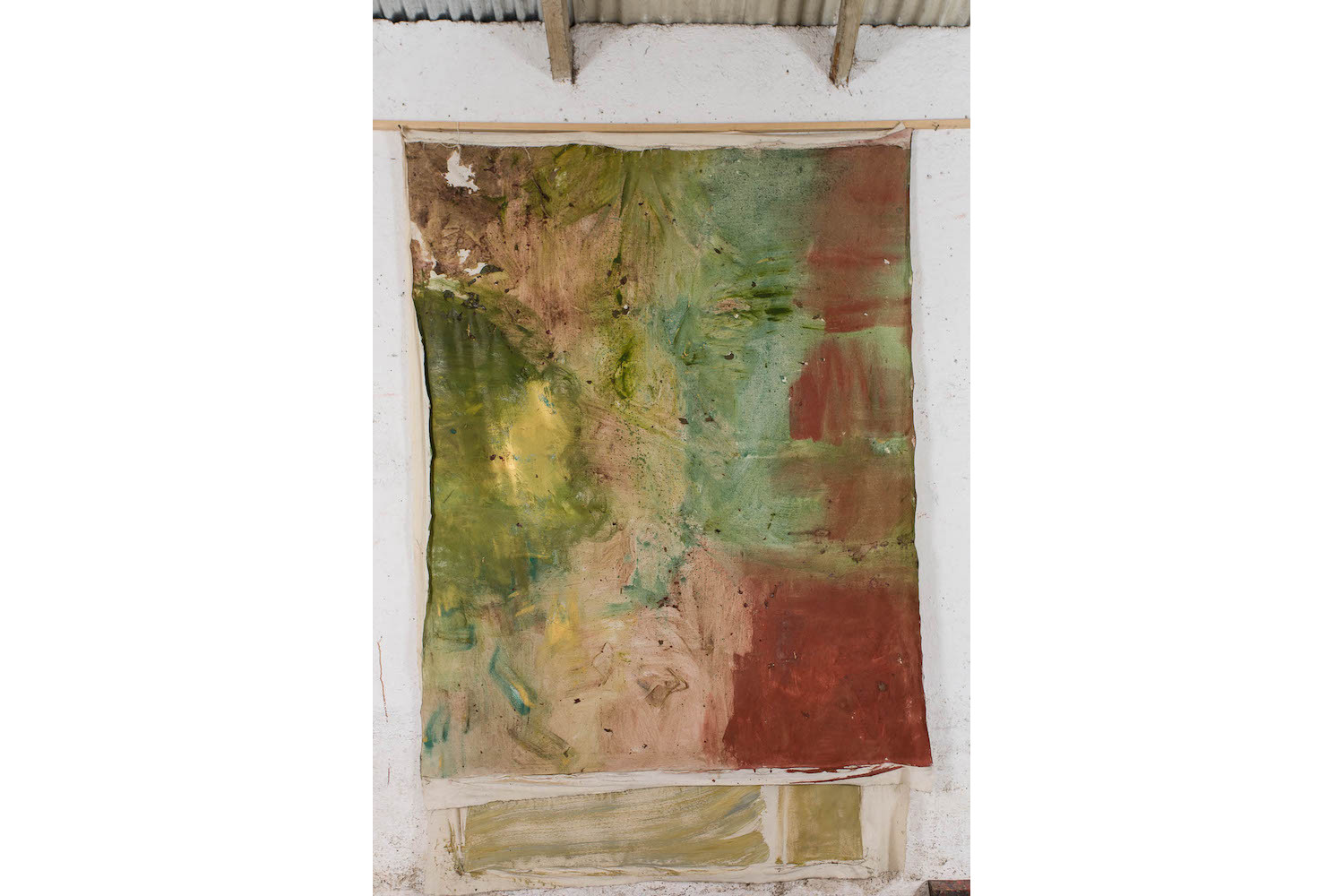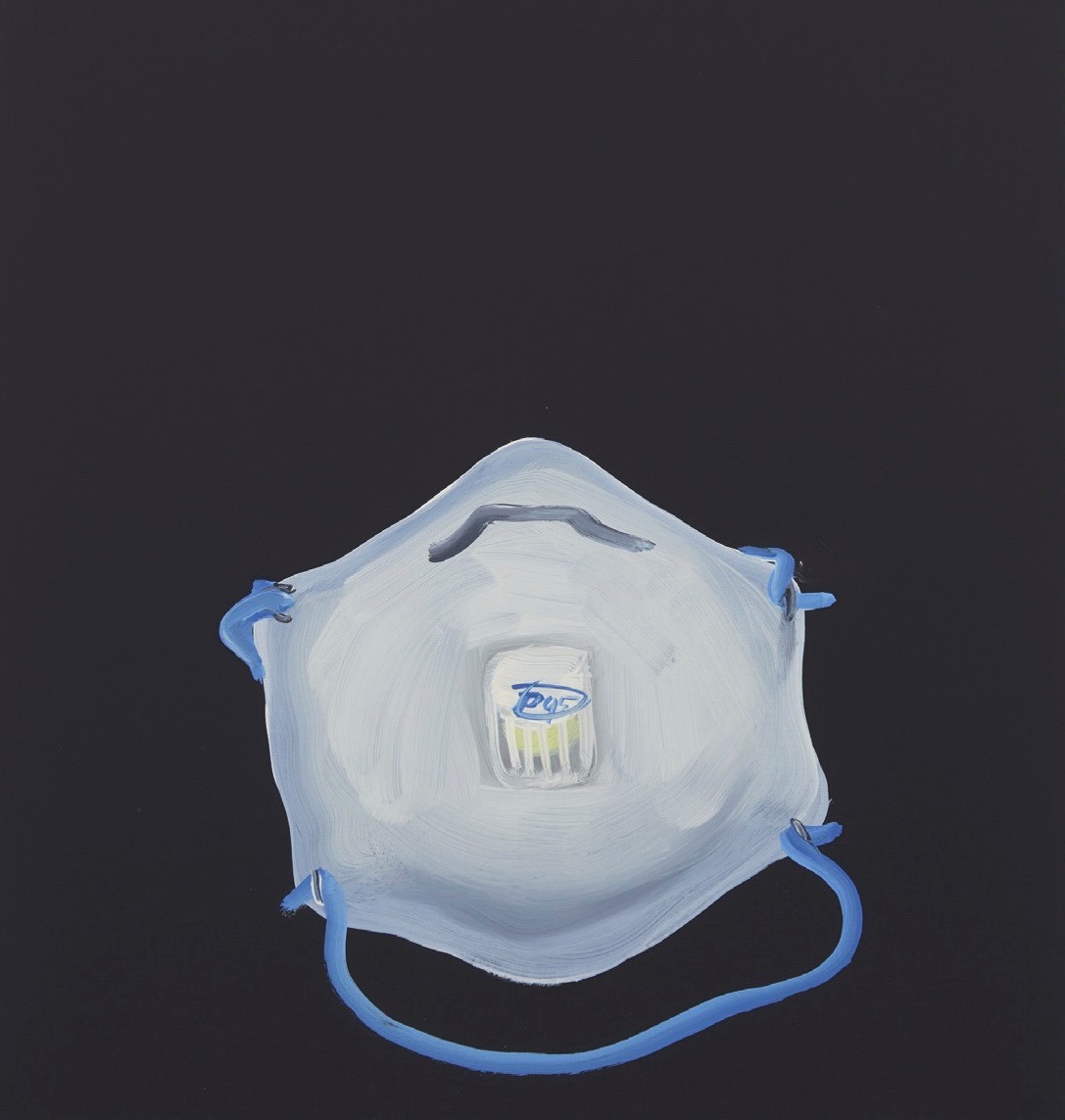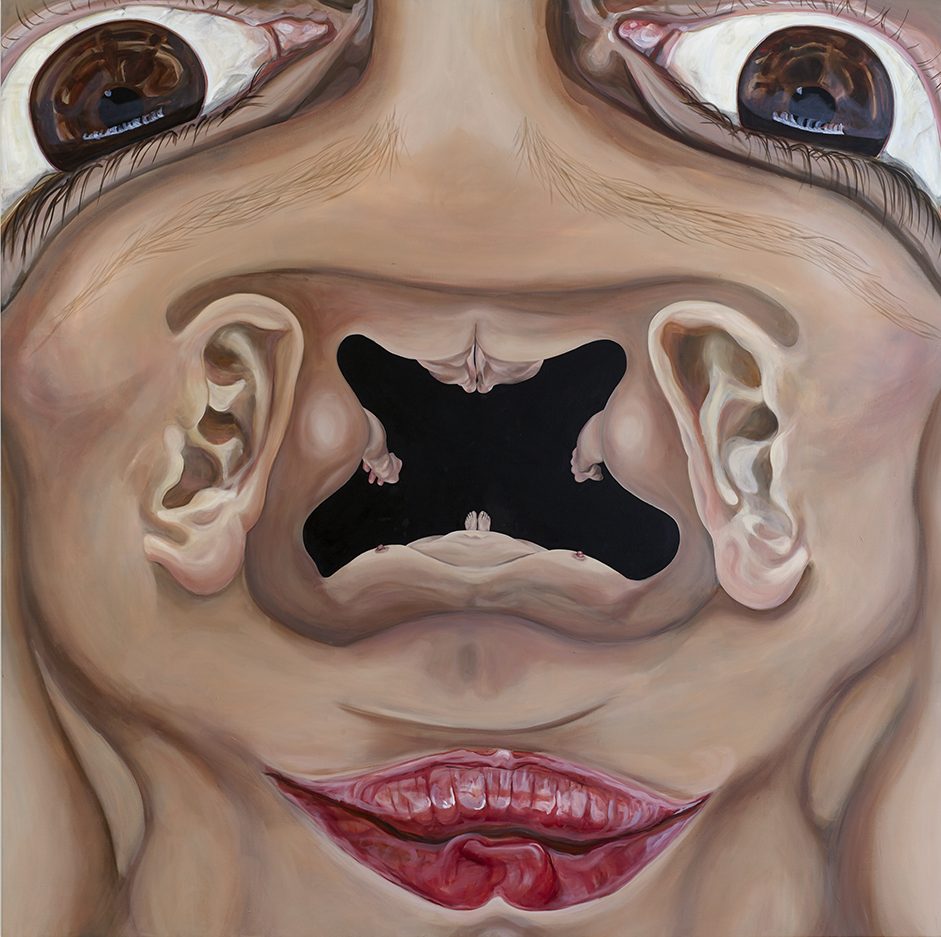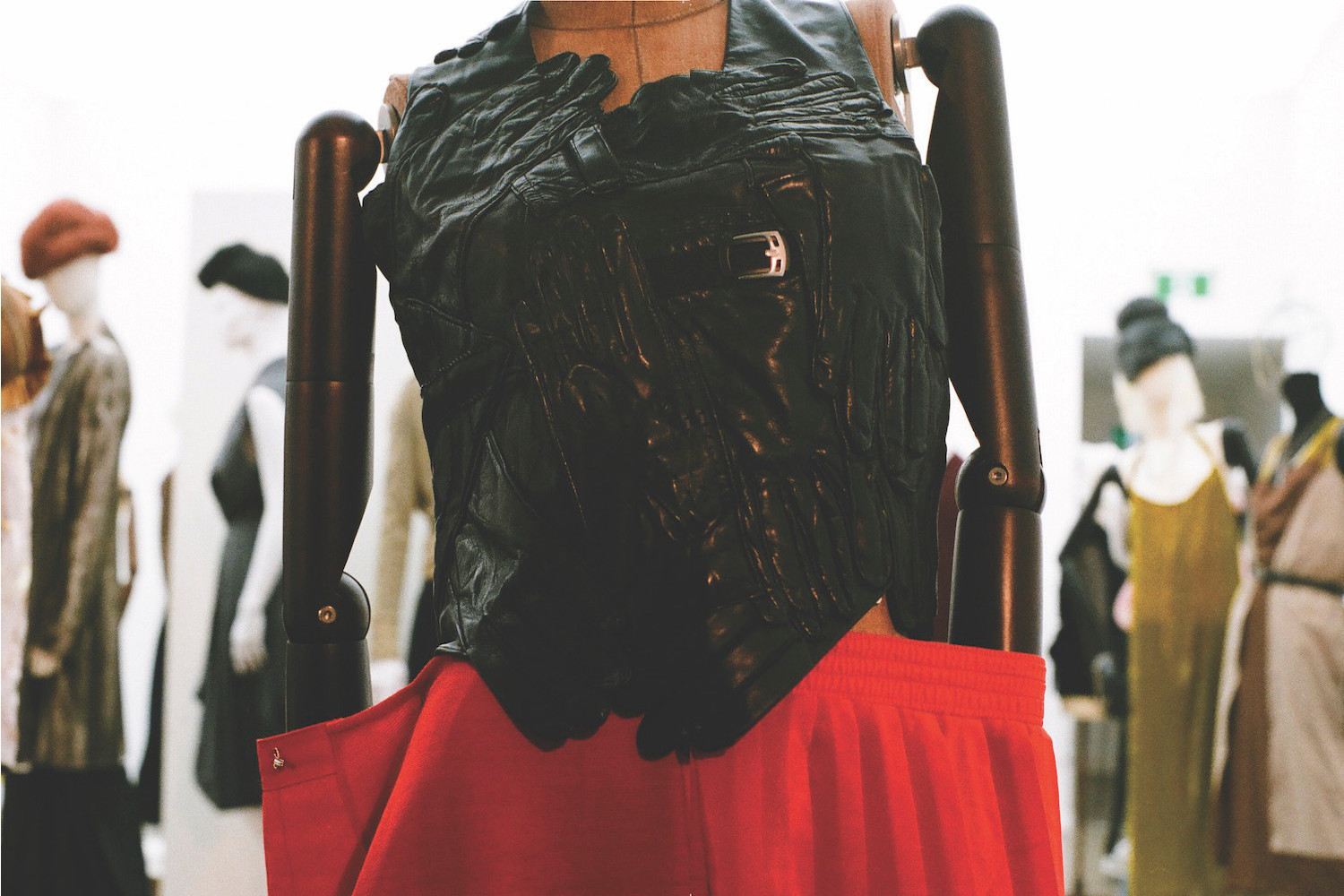Recently, the life and work of Vivian Suter has been afforded an almost mythic quality. Born in Buenos Aires and raised in Basel, the painter has lived in the rural village of Panajachel in Guatemala for nearly forty years. A relatively untouched community, it sits on the edge of Lake Atitlán, a massive volcanic crater bordered by tree-lined, vertiginous hills. In 2005, a tropical storm destroyed parts of the village and flooded Suter’s studio, destroying hundreds of works. Fifteen years on, this ecological precarity has come to play an integral role in her practice. Created in her garden and left outdoors for days, Suter’s large-scale canvases are synonymous with the unpredictable landscape in which they are produced.
Suter’s new solo show at Camden Arts Centre, “Tintin’s Sofa,” brings together an incalculable number of recent paintings. Filling the galleries, canvases are suspended from and draped across every surface. Unprimed and unmounted, they have thick, raw borders and frayed edges. They are piled on top of one another on the floor, building up limited height despite their quantity. Some are suspended from the ceiling or light fittings, occasionally disappearing up into the building’s skylights. Hung from a multitude of heights, they overlap and obscure each other, mirroring the canopy of the rainforest in which they originated. In the central gallery, a large storage rack dominates the space, each canvas hanging like a rug in a display room. The distance between them is narrow, so they can only be witnessed as a collective — an accumulation of invisible singularity.
Navigating the exhibition is akin to walking through a field of confused washing lines. While the number of works is vast, so is the variety of color and mark-making. Most paintings are abstract, faded and bleached out through overexposure to sun or rain, while others are saturated with vivid color. There are recurring shapes and symbols: circular, wave-like forms, figurative gestures, animal outlines. Signifiers and remnants of her home are always present: mud, twigs, leaves, and the encrusted paw prints of her dogs. A battered, black plastic bag hangs precariously from the corner of one canvas, as though weighing it down or polluting it through entanglement.
Installed in Camden Art Centre’s lofty galleries, Suter’s paintings are treated with a sculptural quality — their arrangement asks you to look up, behind, around, and under. The exhibition is both a singular installation and a vast collection of individual works. Initially overwhelming, it gradually reveals the points of activation from Suter’s unknowing collaborators: color gradients created by rainwater, paint cracking caused by heat, marks made by the scurry of an animal. As such, the reactive immediacy of Suter’s paintings bear witness to the specificity of her environment and the universality of our own. They are vulnerable and robust — an exercise in control and surrender.


